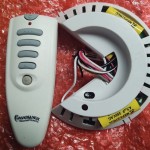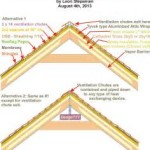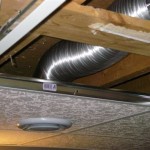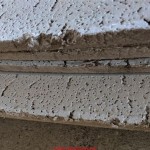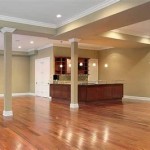```html
What To Do With a Drop Ceiling
Drop ceilings, also known as suspended ceilings or T-bar ceilings, are ubiquitous in commercial buildings, basements, and occasionally in other areas of residential homes. These ceilings consist of a grid of metal channels suspended from the structural ceiling above, into which individual tiles or panels are placed. While drop ceilings offer advantages like concealing wiring, plumbing, and ductwork, and providing easy access for maintenance, they often leave something to be desired aesthetically. This article explores various strategies for dealing with a drop ceiling, ranging from simple cosmetic improvements to complete replacement.
Improving the Aesthetics of an Existing Drop Ceiling
The most straightforward approach is to enhance the appearance of the existing drop ceiling without undertaking major renovations. This method focuses on addressing the visual imperfections that often make drop ceilings seem dated or unappealing. Several techniques can be employed to achieve this.
Cleaning and Repair: The first step is a thorough cleaning of the tiles and grid. Over time, drop ceiling tiles accumulate dust, dirt, and stains. A mild detergent and water solution can be used to wipe down the tiles. For stubborn stains, a specialized ceiling tile cleaner may be necessary. Any damaged or stained tiles should be replaced with new ones. Similarly, the metal grid can be cleaned with a damp cloth and, if rusted or damaged, spot-treated with rust inhibitor or replaced in sections.
Painting the Tiles and Grid: Painting can dramatically alter the appearance of a drop ceiling. Choose a paint specifically formulated for ceiling tiles, as standard paint can cause the tiles to warp or sag. Light colors, such as white or off-white, are generally recommended to brighten the space and create a sense of openness. The metal grid can also be painted to match the tiles or to provide a contrasting accent. Use a primer suitable for metal before applying the topcoat. Spray painting is often the most efficient method for achieving a uniform finish on both the tiles and the grid.
Replacing the Tiles: A wide variety of drop ceiling tiles are available in different textures, patterns, and materials. Replacing the existing tiles with more aesthetically pleasing options can significantly improve the overall look of the ceiling. Consider tiles with embossed designs, textured surfaces, or even faux wood or metal finishes. Acoustic tiles, which offer enhanced sound absorption, are also a popular choice, particularly in home theaters or offices. When replacing tiles, ensure that the new tiles are the same size and thickness as the existing ones to ensure a proper fit in the grid.
Adding Decorative Elements: Incorporating decorative elements can further enhance the visual appeal of the drop ceiling. Consider adding decorative trim or molding around the perimeter of the ceiling to create a more finished look. Hanging lightweight decorative items, such as pendant lights or artwork, from the grid can also add visual interest. Be mindful of the weight capacity of the grid and avoid hanging anything too heavy that could cause the grid to sag or collapse. Ensure all modifications comply with local building codes.
Modifying the Drop Ceiling Structure
For a more substantial change, modifications to the structure of the drop ceiling itself can be undertaken. These modifications might involve altering the height of the ceiling, concealing the grid, or creating a more visually interesting layout.
Raising the Drop Ceiling: In many cases, drop ceilings are installed lower than necessary, reducing headroom and making the space feel cramped. If possible, consider raising the drop ceiling to its maximum allowable height. This can be achieved by adjusting the suspension wires that support the grid. However, it's essential to ensure that there is sufficient clearance for any existing utilities, such as ductwork or plumbing, that are concealed above the ceiling. Consultation with a qualified contractor is advisable before attempting to raise a drop ceiling.
Concealing the Grid: One of the main drawbacks of drop ceilings is the visible grid. Several techniques can be used to conceal the grid and create a more seamless look. One option is to use wider ceiling tiles that partially cover the grid. Another approach is to install furring strips along the grid to create a solid surface that can be finished with drywall or other materials. This method requires more extensive work but can result in a completely hidden ceiling grid. A third option involves using a specialized grid concealment system designed to hide the grid while still allowing for easy access to the space above.
Creating a Unique Layout: The standard grid layout of a drop ceiling can be modified to create a more visually interesting design. Consider using different sizes and shapes of tiles to create a pattern. Recessed lighting fixtures can also be incorporated into the layout to highlight certain areas of the room. Another option is to create tiered or stepped ceiling effects by installing sections of the drop ceiling at different heights. These modifications require careful planning and execution but can significantly enhance the aesthetic appeal of the ceiling.
Integrating Lighting: Lighting is a crucial aspect of any ceiling design. Standard fluorescent tube lights are often associated with drop ceilings in commercial spaces. Upgrading to recessed LED lighting can significantly improve the overall ambiance of the room. LED lights are more energy-efficient and offer a wider range of color temperatures and dimming options. Consider installing a combination of ambient, task, and accent lighting to create a well-lit and visually appealing space. Ensure that all lighting installations comply with local electrical codes.
Replacing the Drop Ceiling Entirely
In situations where the existing drop ceiling is severely damaged, outdated, or simply not meeting the desired aesthetic, a complete replacement may be the best option. This provides an opportunity to install a more modern and visually appealing ceiling solution.
Drywall Ceiling: Replacing the drop ceiling with a drywall ceiling is a common and effective option. Drywall ceilings provide a smooth, seamless surface that can be painted or textured to match the desired aesthetic. This option requires removing the existing drop ceiling grid and installing furring strips or joists to support the drywall. Wiring and other utilities need to be rerouted or concealed before the drywall is installed. Drywall installation is a skilled trade, and professional installation is recommended to ensure a smooth and durable finish.
Wood Ceiling: Wood ceilings offer a warm and inviting aesthetic. Various types of wood can be used, including planks, panels, or even tongue-and-groove boards. Wood ceilings can be installed directly over the existing ceiling joists or on furring strips. Proper ventilation is essential to prevent moisture buildup and wood rot. Wood ceilings can be stained or painted to match the desired color scheme. Consider the weight of the wood and ensure that the ceiling structure can support the added load.
Exposed Ceiling: In some cases, leaving the ceiling exposed can create a unique and industrial-chic aesthetic. This option involves removing the existing drop ceiling and leaving the structural ceiling above visible. The exposed ceiling can be painted or sandblasted to clean and prepare the surface. Wiring, ductwork, and plumbing can be left exposed or concealed with conduit or other decorative elements. Exposed ceilings are particularly popular in lofts, warehouses, and other industrial-style spaces. This approach requires careful consideration of the existing ceiling structure and the desired aesthetic.
Specialty Ceilings: A variety of specialty ceiling options are available, including coffered ceilings, tray ceilings, and vaulted ceilings. These ceilings offer unique architectural features and can significantly enhance the visual appeal of a room. Specialty ceilings typically require more extensive construction and may involve structural modifications. Professional design and installation are essential to ensure a successful outcome. Consider the cost and complexity of these options before making a decision.
When deciding how to proceed, factors such as budget, desired aesthetic, and the condition of the existing ceiling structure should be considered. It is important to comply with all local building codes and regulations when making any modifications to a ceiling. Consulting with a qualified contractor or designer can help determine the best solution for the specific needs and circumstances of each project.
```
How To Easily Update An Ugly Drop Ceiling

Completely Cover A Drop Ceiling Ceilings Armstrong Residential

A Drop Ceiling That Looks Better Than Drywall How To Install In Basement Diy

Finishing Basement 11 Diy Accessible Ceiling Drop Idea Easy Fast Looks Great

Creative Drop Ceiling Ideas B4 And Afters

Installing Woodhaven Planks And Hiding Drop Ceiling Grid Sawdust Girl

How To Remove A Drop Ceiling Like Pro We Do

Beadboard Ceiling Tiles B4 And Afters A Drop Alternative

Stunning Suspended Ceiling You Can Diy Home With Krissy

12 Drop Ceiling Installation Tips From A Pro Family Handyman
Related Posts

